
In 2000, Enron was the darling of Wall Street, the largest seller of natural gas in North America, the fifth largest corporation in the United States, and the nation's "most innovative" large company (according to Fortune magazine). By the end of November 2001, Enron's stock price had fallen from over $90 per share to just pennies. On December 2, 2001, the company filed for bankruptcy. In the wake of Enron's downfall, federal investigators discovered evidence of corporate arrogance, greed, and fraud of an unprecedented level. In 2006, the two highest ranking Enron executives involved in the scandal, Ken Lay and Jeff Skilling, facing charges of fraud, insider trading, and conspiracy, would have their fates determined by a Houston jury. Prosecutors hoped their verdict would send a message to corporate America.
The Rise and Fall of Enron
Kenneth Law had a vision. He saw great opportunities for a company that developed the skills to win in a new rough-and-tumble deregulated natural gas industry. For this son of a Missouri Baptist preacher, free markets were a matter of faith--with markets free, and with his smarts and political skills, he could build a great company, serve his nation well, and make a lot of money.
In 1985, as the CEO of Houston Natural Gas during a period in which the Reagan Administration was eliminating price controls on natural gas and allowing the commodity to be bought and sold freely, Ken Lay seized the opportunity to merge with a Nebraska-based pipeline company, InterNorth, and give the newly-merged company a new name: Enron. In the beginning, Enron was hugely successful. It bought large quantities of natural gas at discounted prices and then delivered it through its own nationwide pipeline system to wholesale customers like power companies. It also introduced long-term contracts and futures contracts into the market, allowing buyers of its gas to hedge against price fluctuations. Enron soon became the 800-pound gorilla of a middleman in the natural gas industry, transforming the market, and capturing huge profits. By 1992, Enron was the largest natural gas company in the United States.
Over time, however, other companies began to copy Enron's innovative approaches, competition in the natural gas industry stiffened, and Enron's profits began to shrink. Jeffrey Skilling , president of Enron, decided diversification was necessary to drive profits higher. Under his leadership, Enron expanded into a wide variety of new businesses, including energy trading, power generation, water, coal, retail electricity, metals, and broadband communication. The company spent enormous sums on projects to purchase electric companies in Oregon and Brazil, build a power plant in India, a paper mill in Quebec, and a water utility in the U.K., among other investments. Most of these investments failed to produce the expected profits, perhaps owing to Skilling's decision to placing them under the direction of existing Enron natural gas traders rather than finding people with deeper experience in the various industries. Enron's losses ballooned to "well over $10 billion in cash," according to a report years later in Fortune magazine.
Rather than tell investors the truth--the real story of Enron's crumbling financial picture--Skilling and other executives at Enron opted to employ a series of misleading, and in many cases illegal, tactics to produce financial statements for the Securities and Exchange Commission than continued to show escalating profits and low debt. The chief architect of the conspiracy to disguise Enron's true financial picture was Chief Financial Officer Andrew Fastow. Enron and Fastow created a bewildering array of special purpose entities--entities whose special purposes were to hide Enron's underperforming assets (one trial witness would call the low quality paper and equity "nuclear waste") and allow Fastow to skim tens of millions of dollars for personal use. On three handwritten pages (in what would later be called the "Global Galactic" agreement after the notation in Fastow's calendar to discuss it), Fastow outlined a plan to ensure himself against any losses in the many side deals he had made with Enron to hide the company's losses.
With almost all of Enron's profits made up, and almost all of its debts hidden by fraudulent accounting, it became increasingly difficult to convince Wall Street that all was well with Enron. Enron's stock price began to collapse in March of 2001 following publication of the article "Is Enron Overpriced?" by Bethany McLean in Fortune magazine. McLean argued that there, Enron's reports provided almost no clue as to how the company made its reported profits, and suggested that analysts had been too eager to pump up the Enron story. A month later, when quizzed by an analyst for failing to release a balance sheet with its earnings statements, Skilling lost his cool, calling the analyst "an asshole" for even asking the question. Within a few more months, Skilling was out of a job, and Ken Lay re-assumed his old job as CEO of Enron. One day later, Enron's vice president for development, Sherron Watkins, sent Lay a six-page letter detailing problems with Enron's accounting practices. Meeting with her on August 22, Lay promised to raise her concerns with Enron's law firm, Vinson & Ellis. Meanwhile, Lay continued to tell employees and potential investors that Enron's problems were nearly behind them and that the company had a great future.
Things went from bad to worse over the next couple of months. Enron's stock price continued to slide as one hedge fund manager stated, "Enron stock is trading under a cloud." In mid-October, Enron announced that it was restating earnings from 1997 to 2000 to correct accounting violations, and a few days later the SEC announced it would investigate several Enron deals. On October 24, the Enron Board fired Andy Fastow who, they discovered, had received over $30 million for managing LJM partnerships. As credit rating agencies continued to drop Enron's rating, notch by notch, Lay and other executives unloaded vast quantities of Enron stock. In the three months from August to October 2001, Ken Lay alone sold over 918,000 shares of Enron while insisting to others that the company was in good shape. In a last, desperate effort to save Enron, Lay explored merger or acquisition possibilities with rival Dynegy, but the talks fell through and on December 2, 2001, Enron sought federal bankruptcy protection. Shortly after the bankruptcy petition was filed, Jeff Skilling told The New York Times, "I had no idea that the company was in anything but excellent shape." He insisted he had done nothing wrong: "After much soul searching, given the information at the time, I would not have done anything different."
Investigation
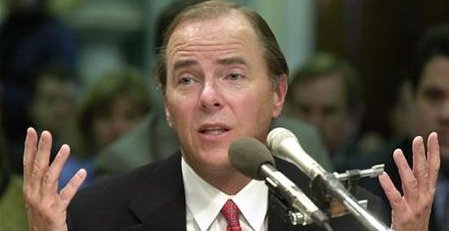
No sooner had the collapse of Enron become complete than the finger-pointing and assignment of blame began. To be sure, there were a lot of people to blame. Employees of Enron's auditor, Arthur Andersen, shredded thousands of pages of Enron documents at the urging of Andersen executives in Chicago. Six months after Enron's bankruptcy, the firm was convicted of obstruction of justice (though the U.S. Supreme Court reversed the conviction in 2005 because of a flawed jury instruction). The Enron debacle finished Arthur Andersen, formerly one of the nations "Big Five" accounting firms, putting its 85,000 employees out of work. Andersen argued that its audits technically complied with the law, at least in instances where they were not lied to by Enron employees. But the firm's argument ignores the big picture: Andersen knowingly helped present to the world, as described by Bethany McLean and Peter Elkind in The Smartest Guys in the Room, a "completely illusory picture of Enron's financial health." Securities analysts who covered Enron also failed to do their job; they failed to analyze. Many analysts retained a "Buy" recommendation for Enron stock right up to the day the company sought bankruptcy protection. Investment banks, including J. P. Morgan and Citigroup, eagerly and with a wink and a nod, provided the financial participation that made Enron's scandal possible, but refused to accept responsibility. Even Enron's own Board of Directors, who failed to ask the tough questions that might have prevented much of the damage, refused to shoulder blame for the collapse. In response to criticism from Congress, the Board issued a report stating that they had "in good faith...prudently performed their fiduciary duties based on the information provided to them."
Michael Chertoff, chief of the Justice Department's Criminal Division, created a special task force headed by Leslie Caldwell to investigate Enron. Caldwell filled the team with both experienced white-collar prosecutors and prosecutors with experience trying mafia cases. One member of the special task force, John Kroger, suggested the decision to include mafia prosecutors recognized that organized crime cases provided the best training ground for a case that required attorneys who were tough, aggressive, and understood how to handle complex cases.
The task force's investigation, which consumed four years, and which eventually resulted in charges against thirty-three individuals, required careful study of Enron's public statements going back several years--its quarterly and annual reports, its press releases, Skilling's testimony in 2002 before a committee of Congress, and transcripts of its presentations to stock analysts. To the extent the public statements showed an inconsistency between what the top executives knew about the company's financial situation and what they were telling people outside the company, the statements could provide support for a charge of securities fraud. When dozens of FBI agents descended on Enron's headquarters, they carted away hard drives and hundreds of boxes of documents. The task force had an onerous task: making sense and a criminal case out of approximately ten million documents. Enron had entered into 3,500 separate transactions with banks and investment funds that were designed in one way or another to hide Enron's financial reality, and each had its own (often strange) Enron code name, such as Braveheart, Grayhawk or Chewco. Investigators struggled to make sense of transaction diagrams with jargon like "unwind swap sub hedge."
In addition to Enron's documents, the task force interviewed former Enron employees. For the most part, the investigators encountered a wall of corporate silence. Sherron Watkins, the whistle-blower who first confronted Ken Lay with evidence of accounting irregularities, provided help, but Watkins was not a member of Enron's inner-circle. They also needed witnesses who had the ability to help jurors understand transactions that at first seemed mind-boggling in their complexity.
Investigators focused considerable attention on the activities of Chief Financial Officer Andy Fastow who, they realized, was the central figure in Enron's illegal activities. Although it was not a crime, however ethically troubling, for someone in Fastow's position to have created his own personal investment company, LJM, to buy underperforming (and often near worthless) assets of Enron in order to get them off the company's financial reports, it was a crime for him to secure promises from Enron that the assets would later be bought back from him at an inflated price to protect him from any financial risk. Prosecutors came to see Fastow, someone close to Skilling and Lay and in a strategic position within Enron, as the possible star witness in any prosecution of the firm's two top executives. In the words of one member of the DOJ task force, "In mafia cases, you flip capos against bosses. Fastow, we believed, was an Enron capo."
On Halloween Day 2002, a grand jury indicted Andy Fastow on seventy-eight counts of fraudulent conduct, but prosecutors' hopes that Fastow would quickly agree to plead guilty and cooperate were soon dashed. His attorneys signaled that they planned to dig in and defend their client in a trial. But prosecutors have means of applying pressure. In Fastow's case, prosecutors decided that filing criminal charges against his wife, Lea, might provide the pressure they needed to convince Fastow to plead guilty. Fastow, they believed, might conclude that a plea agreement was preferable to having his two young sons raised by others while the Fastows served potentially lengthy prison terms. The basis for the charge against Lea Fastow was the tax form she signed identifying two checks she received as "gifts" rather than investment income. The checks related to Andy Fastow's "RADR transaction" in which he received an above market rate of interest on a loan and obtained kickbacks from a co-conspirator were disguised in the form of Hanukkah "gift checks" in the names of his wife and children. Although Lea Fastow was a bit player in a scheme wholly designed by her husband, prosecutors charged her with criminal tax evasion for knowingly signing the fraudulent joint tax return. (Normally, tax evasion of the magnitude involved here would result in a civil settlement with the IRS, involving payment of back taxes and a fine.) Although a strong argument can be made that the hardball tactic used by prosecutors was unethical, it worked. On January 14, 2004, in Houston's Federal District Courthouse, Fastow stood before the bench next to his lawyers as Judge Kenneth Hoyt asked, "I understand you will be entering a plea of guilty this afternoon?" Fastow replied, "Yes, your honor." The deal, as laid out by prosecutor Matt Friedrich, required Fastow to plead guilty to two counts involving wire fraud and securities fraud, serve ten years in prison, cooperate with authorities in the ongoing Enron investigation, and surrender $23.8 million dollars of assets. Fastow's decision to plead guilty would make him the star witness for the prosecution in the trial of Lay and Skilling.
In the years between Enron's collapse and their trial, Ken Lay and Jeff Skilling took different approaches. Lay laid low and made no public statements. Through his surrogates, however, he made clear his view that he was a victim undone by corrupt subordinates and now unfairly hounded by the media. Skilling, on the other hand, took the offensive. In testimony before Congress in 2002, Skilling claimed that Enron suffered from "a liquidity problem" and "people got scared," sending the company's stock into a tailspin. All of the talk about fraud, he said "is ridiculous." He swore to friends that he would not go down easily: "Until the day I die, I'm going to fight this thing."
The Trial
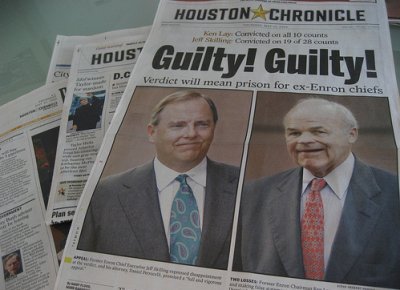
On February 18, 2004, a Houston grand jury indicted Jeff Skilling on thirty-five counts, including charges of fraud, insider trading, and conspiracy. Skilling's lawyer, Daniel Petrocelli (best known for representing the family of Daniel Goldman in their successful civil suit against O. J. Simpson) waved a copy of the indictment in front of reporters and pronounced it "sixty pages of nothing." Five months later, Ken Lay was indicted. The grand jury returned an eleven-count indictment charging him with conspiracy to commit securities fraud, four counts of securities fraud and two counts of wire fraud, one count of bank fraud and three counts of making false statements to a bank. Lay was brought to a holding cell for three hours before his scheduled arraignment. During his brief stay in his cell, a fellow prisoner asked him for investment advice. "Well," Lay answered, "I've not really thought much about that recently." Asked at his arraignment how he plead, Lay replied, "Not guilty, your honor." At a press conference that night at the DoubleTree Hotel, Lay told reporters, "We are anxious to prove my innocence."
Jury selection began on January 30, 2006 at the federal courthouse in Houston (the defense, claiming that area residents were prejudiced against Enron, had unsuccessfully sought a change in venue). Eventually seated were twelve jurors, including eight women and four men. Over the sixteen weeks of the trial, they would become a rather tight-knit bunch. They began each morning in the courtroom with a prayer. On Valentine's Day, they all wore red and on Fat Tuesday, they all wore Mardi Gras beads. They appeared to observers the type of jurors who could reach a unanimous decision--one way or the other.
Prosecutors knew that they had a difficult case. Lead prosecutor John Hueston noted they had "no smoking gun documents implicating either defendant," had little in the way of helpful electronic communications because Lay made no use of email and Skilling used it only rarely, and--in the case of Lay, if not Skilling--had a personable defendant who was anything but a "hands on" guy. Moreover, the fraud and insider trading arguments against Lay suffered from the fact that Lay continued to hold on to a considerable amount of Enron stock even as it fell into bankruptcy.
In his opening argument in defense of Skilling, Petrocelli told jurors, "This is not a case of hear no evil, see no evil. This is a case where there was no evil." He described the Enron collapse as the tragic result of collusion between short sellers and the media. He said that the prosecution would present witnesses who, except for Fastow, plead guilty even though "they're not guilty"--"They've been hooked, hooked into pleading guilty for complicated reasons, reasons about their lives, their children, their families." Michael Ramsey, defense attorney for Lay, insisted that his client "never sold one share of Enron stock that he wasn't compelled to sell" because of margin calls. "This case will rise or fall on that," he concluded.
The Prosecution's Case
In his opening for the prosecution, John Hueston took inspiration from the recently released documentary about the Enron scandal, "The Smartest Guys in the Room." Drawing from the opening scene in the film, Hueston began by stating, "Ladies and Gentlemen, the United States in this case will take you inside the doors of what was once the seventh largest corporation in this country: Enron." Projecting a photograph of the Enron tower on a screen, Hueston said, "To the outside world, Enron appeared to be the picture of corporate success....But inside the doors of Enron, something was terribly wrong." The prosecutor said, "This is a simple case. It is not about accounting. It is about lies and choices." Hueston told jurors that the defendants "chose to falsely assure the investing public that there were no problems at Enron. They chose to lie." He argued that when a CEO lies about his company's financial condition, conceals important facts from investors, he "commits a crime." The facts will show, Hueston contended, that the defendants "told lie after lie" about Enron--"lies that propped up the value of their own stock holdings and lies that deprived the common investors of the facts they needed to make fully informed decisions about their own Enron stock."
The government's first witness was Enron's former head of Investor Relations, Mark Koenig. Prosecutors chose to open with Koenig because of what they saw as his "personal credibility" and "unique ability to explain in simple terms many of Enron's complex businesses." Koenig testified that he had aided and abetted securities fraud at Enron by manipulating earnings to hit quarterly targets, thus undermining the argument of the defense that "there was no evil" at the company. Skilling showed his displeasure with Koenig's testimony, at one point mouthing "son of a bitch" as his former colleague testified. Over four days of cross-examination, defense attorneys suggested that Koenig had shaped answers to please the government. Asked whether he had "a fear of giving an answer that might alienate the government because of the control they have over the rest of your life," the witness answered that he had no fear: "I'm past that."
To humanize a story that seemed mostly to be about accounting practices and imaginary numbers, the prosecution called to the stand victims who lost almost all of their life savings because of the conspiracy of Enron executives. Johnnie Nelson, a pipeline worker who lost his Enron pension, told jurors of his dashed dreams. Patti Klein, a utility worker, testified that her savings had been reduced to "pennies" and that she had been forced to postpone retirement. Hueston explained that the state's goal was to present witnesses who were much like the jurors themselves, people who they could identify with and conclude, "there but for the grace of God go I."
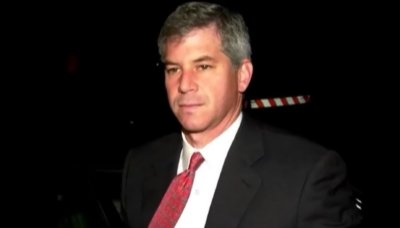
Prosecutors gave considerable thought to the question of how to position CFO Andy Fastow in their line-up of witnesses, and how to handle the fact that jurors would naturally question the credibility of a convicted felon and, by all accounts, the Enron executive at the heart of any criminal conspiracy. Ultimately, prosecutors chose to call Fastow in the middle of their case, concluding that a witness less vulnerable to a brutal cross-examination would make a stronger closing witness. Hueston wrote that he decided to "aggressively front Fastow's weaknesses in direct examination" (hoping, in the process, to diminish the sting that exposure of those same weaknesses might have in cross-examination) and to "create traps for the defense when they predictably tried to distinguish Fastow's crimes from those of Lay and Skilling." One trap laid concerned an anticipated attempt by the defense to underscore in their cross an argument made about Fastow in Michael Ramsey's opening statement: "Did Fastow conceal his illegal conduct from Ken Lay? Of course he did. If you're stealing from the house, you don't tell the boss." In preparing Fastow for his cross, prosecutors explored with him the notion of "stealing from the house," suggesting to their witness that "the house" might include Enron shareholders, and that Enron's manipulations effectively stole "from the larger house" and resulting in Lay and Skilling being "rewarded with stock options and bonuses." When, during cross, Fastow stated "we stole from Enron," defense attorneys asked the predictable question, "Who's the 'we'?" and followed up with a question suggesting that Fastow alone was the thief. Fastow answered, "What I'm saying is when you misrepresent the nature of your company, when you artificially inflate earnings, when you improperly hide losses, when you do things like this to cause your stock price to go up so you can sell your stock and cause yourself to make earnings targets, that otherwise you'd be unable to make so you get high salaries and bonuses, that is stealing." In closing arguments, defense attorneys dropped their "stealing from the house" metaphor.
Paula Rieker, Enron's corporate secretary, provided testimony about the reaction of the Enron Board of Directors to revelations without presenting the risks for the prosecution that might call from calling any of the actual Board members, who most likely would have been subjected to lengthy cross-examination. Hueston asked Rieker if she could recall the response of Board members when information about Enron's questionable loan activity was presented to them. Rieker answered that Director John Duncan complained "Mr. Lay was using Enron like a damn ATM machine."
The state's final witness, the end of a parade of Enron executives to the stand, was Enron's former treasurer, Ben Glisan. Prosecutors slotted Glisan last because he could corroborate the worst corporate abuses, but lacked Fastow's record of self-dealing. In addition, Glisan had what prosecutors called "a boy scout demeanor" and a "professorial, balanced delivery." Glisan testified about Skilling's knowledge of the existence of the "Global Galactic" agreement drawn up by Fastow to hide the company's underperforming assets and massive losses. Glisan also told jurors that he had informed Lay about the dire financial problems of Enron, then listened as his boss told the world that everything was going swimmingly at the company. Defense attorney Ramsey, after Glisan's testimony, dismissed Glisan as "a trained monkey," but most courtroom observers found his testimony compelling.
The Defense Case
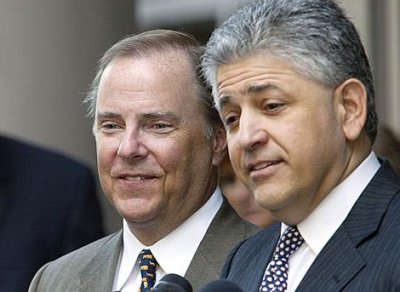
Defense attorneys chose to take the risk of calling the defendants. Skilling was on the stand for eight days. In his four days of direct examination, Skilling testified first about his innovations in the energy business, then was lead through a series of rebuttals to just about every accusation of misbehavior against him offered during the state's case. In the view of the lead prosecutor, "Over time, the very number of disagreements that Skilling presented to the jury began to appear implausible." On cross-examination, prosecutor Berkowitz scored points by forcing the defendant to admit he had made a personal investment in a company launched by his ex-girlfriend--a company which did the bulk of its business with Enron. He also secured an admission that Skilling attempted to sell 500,000 shares Enron stock soon after he left the company.
Ken Lay, expected to be the more even-keeled defendant on the stand, instead showed several flashes of temper, replying to questions of prosecutors in a contemptuous tone. Prosecutors confronted Lay with evidence that he sold more shares of Enron stock than was necessary to meet the margin calls that he testified was the sole reason for the sales. Prosecutors also suggested he had other assets, such as a second home in Aspen, that could have been sold instead of stock to meet the margin calls. Questioned about his lavish lifestyle, including spending $200,000 to rent a yacht for a birthday party, Lay snapped back at the prosecutor. Asked whether he had contacted prospective witnesses before trial, Lay hesitated: "I-I-I don't know that I have contacted witnesses." Unfortunately for Lay, the prosecution had ample evidence that more than one witness had in fact been contacted by Lay, even after being warned by the witness's counsel not to do so. Lay eventually conceded that he had called witnesses "to at least make sure that my recollection of those meetings was the same as theirs." Finally, Lay was quizzed about a $120,000 investment he made in a company, Photofete, that did business with Enron--an investment made without securing the permission of Enron's Board, as required by the company's own Code of Ethics. Lay admitted he did not follow the rules: "Rules are important, but they should not--you should not be a slave to rules, either."
The Jury's Decision
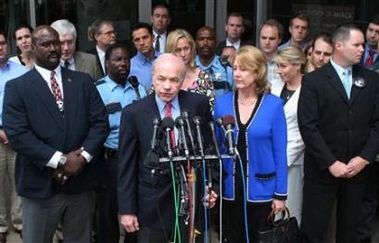
Jury deliberations began on May 17, 2006 after sixteen weeks of testimony and arguments. Six days later, the jury reached a verdict, convicting Lay on all counts and Skilling on nineteen of the twenty-eight counts he faced. Jurors said later that they admired much of the work Lay and Skilling did in building Enron. They said reaching a verdict had been a difficult task, forcing them to put together "a puzzle with 25,000 pieces dumped on the table." One juror, Wendy Vaughan said, "I wanted to believe very, very badly what they were saying." She said that Lay "had a little bit of a chip on his shoulder" that "made me question his character." Other jurors described Lay as "feisty" or "very controlling." Yet another juror was more generous in appraising Lay: "He was like everyone's grandfather...Arrogant, but not in a bad way."
Prosecutors told reporters that the jury's verdict sent a message that "no matter how rich and powerful you are, you have to play by the rules." Skilling said, "We fought a good fight, and some things work, and some things don't." His attorneys promised an appeal. Lay said he was "shocked" by the verdict, but "despite what happened today, I am still a very blessed man.
The Aftermath
Ken Lay would never serve time. On July 5, while on a week-long vacation at his Aspen home with his wife Linda, Lay got out of bed in the early morning to go to the bathroom and collapsed, the victim of a massive heart attack. On October 23, 2006, Jeff Skilling stood before Judge Simeon Lake and heard him pronounce a sentence of 24 years in prison and a fine of $45 million. On December 13, he reported to a minimum-security prison in Waseca, Minnesota to begin serving his sentence. On June 21, 2013, Judge Lake reduced Skilling's sentence. He could be released by 2017.
On December 16, 2011, Andy Fastow was released from prison. As a speaker at a national convention of fraud examiners in Las Vegas in the summer of 2013, Fastow told his audience that corporate practices had gotten worse than ever. "In my opinion," he said, the problem today is ten times worse than when Enron had its implosion."
The Enron scandal did, however, produce some reforms. After Enron, most business schools now include ethics courses. Congress enacted Sarbanes-Oxley, a law that adopted new standards for audit reports, required disclosure of companies' relationship with entities of the sort created at Enron, and mandated that executives sign off on financial reports.
